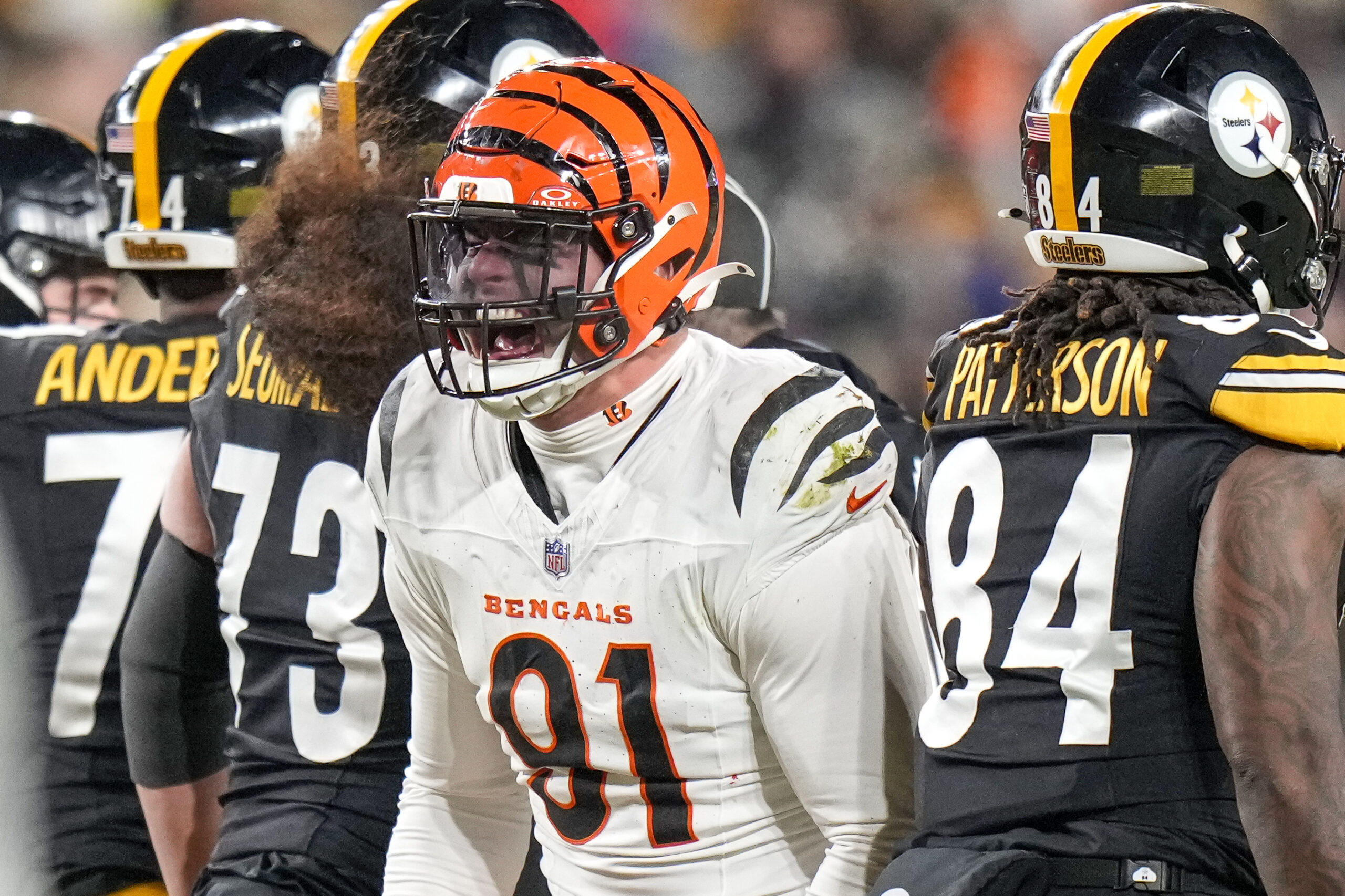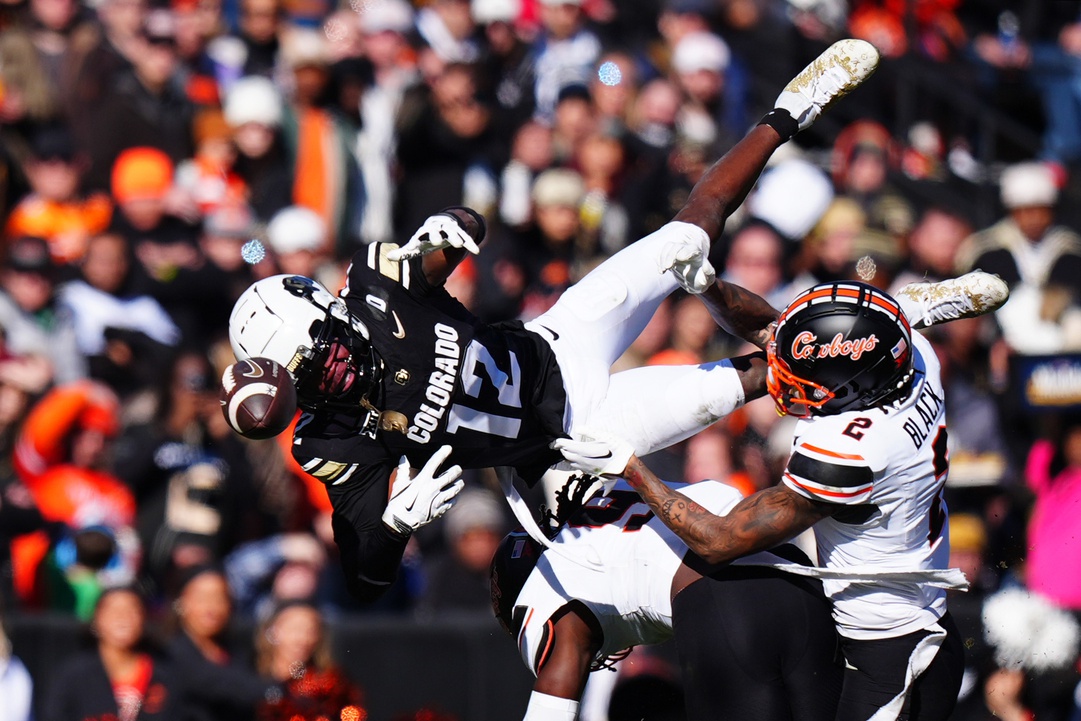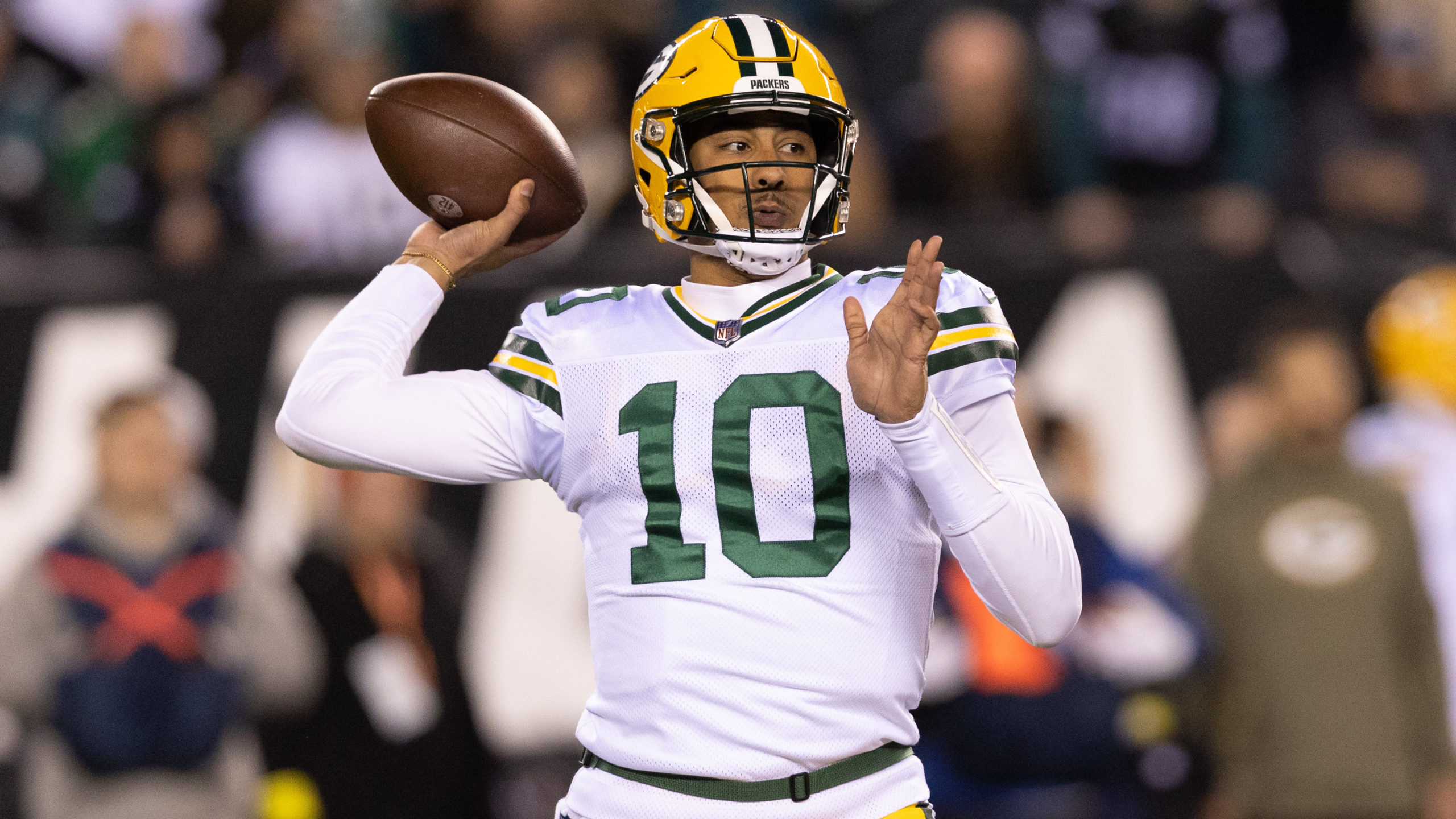NFL Analysis
3/27/24
10 min read
Golden Age of WR Prospects: 2024 Draft Class Shatters Records and Expectations
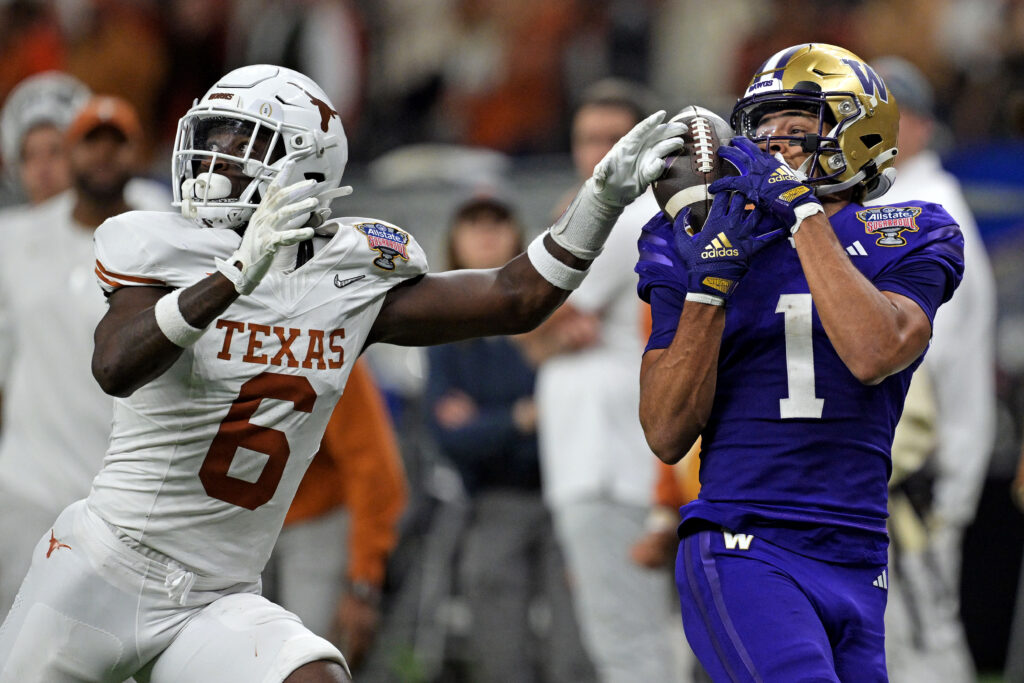
We're in a golden age of wide receiver prospects. While other positions have bounced between deep and shallow in a given draft class, the wide receiver position has produced strong and deep classes over the past few seasons.
In 2023, 27 receivers ran at least 100 routes as rookies, the most over the past decade, per TruMedia. While not all receivers were ready for that type of involvement with 11 of those players posting sub-1.0 yards per route run, there was also more high-level play than we’ve seen in years.
Five rookie receivers had at least 2.0 yards per route run, and four saw at least 100 targets. That target volume falls in line over the past few seasons, but it should be noted another three receivers had at least 90 targets, which is well above the previous two seasons that saw a big gap between the 100-target receivers and the next players on the list.
WRs in 2024 Draft who Stand Out in Target Yards Added
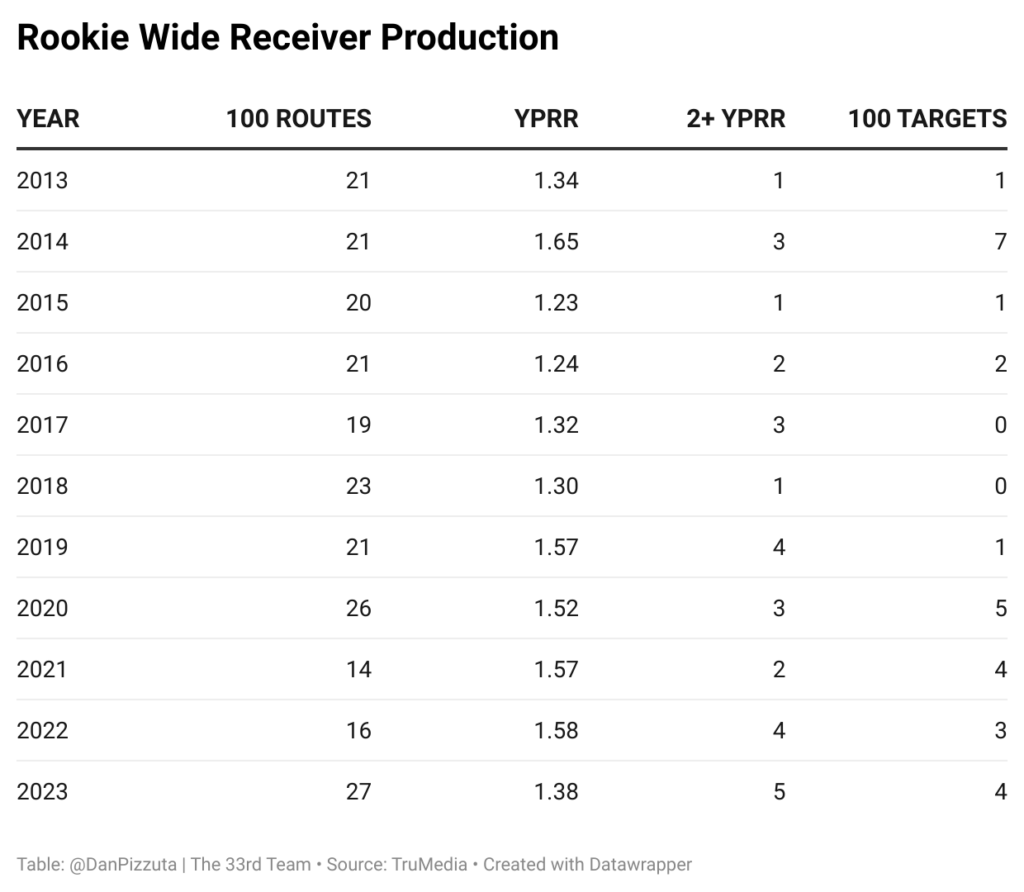
As wide receivers have gotten better at the college level, there has been more production.
The wide range of college offenses can make scouting and projecting quarterbacks difficult, and that trickles down to wide receivers. It can be easier to see what wide receivers are asked to do, but that can vary wildly from offense to offense.
A way to help differentiate those offenses is a metric I’ve called "Target Yards Added." Simply, Target Yards Added takes a wide receiver’s yards per target and subtracts yards per attempt when the quarterback throws to anyone else on offense. That way, we get a bit of a baseline of what the overall production was and what a given receiver adds to it. These numbers are all based on the receiver’s final college season.
This metric is not meant as a proxy for receiver rankings, but it can provide some more context on how these receivers performed and on their surroundings.
The 2024 class lives up to the hype by this metric, both at the top and in depth. The average Target Yards Added in this year’s class is 2.29; typically, a class average is somewhere in the 1.5 range.
Let’s take a look at the class as a whole and then take a deep look into what some of these numbers mean.
Top of the Class
It’s always good when the receivers on top of the scouting consensus come out favorably in this metric. We have that with the top three in this class — Ohio State’s Marvin Harrison Jr., LSU’s Malik Nabers and Washington’s Rome Odunze.
Harrison does just about everything well. There’s a reason he’s the consensus WR1 in this class, even if some evaluators have gotten bored and try to say otherwise. Unlike other Ohio State wide receivers in the past, Harrison played his final college season as the receiver who defenses knew was getting the ball — and it didn't matter.
On a per-route basis, Harrison is unsurprisingly at the top of the class. He ranks third in yards per route run and second in targets per route run. He’s put up over 3.0 yards per route run in each of the past two seasons and has the versatility to play the slot, which can make him a nightmare to cover with his 6-foot-3 frame.
Nabers is typically viewed as the WR2 in the class and gets dinged a bit by this metric just because of his environment: the LSU offense. The 10.03 yards per attempt to receivers other than Nabers is the highest in this class (the 9.97 to teammate Brian Thomas Jr. is second). But Nabers still shines everywhere.
He was first in yards per route run, third in target share and seventh in targets per route run — all impressive metrics with a likely first-round pick teammate in that receiving corps. Nabers has the speed to change the geometry of a defense. There are no correct angles for defenders when they’re trying to tackle Nabers, and that led to high broken-tackle and yards-after-catch figures.
Then there's Odunze, who comes out the best of the trio by this metric. He was also the best of the trio of Washington receivers who are in this draft class. At 6-foot-3, Odunze has the size to play as an X receiver and the speed to win downfield. Fourty-two percent of his routes were deep in 2023, per SIS, which ranks fourth in this draft class.
He’s such a smooth athlete that his movements make up for his lack of game-breaking speed (such as what Nabers possesses), and his body control makes him nearly unstoppable at the catch point.
There is a decent hit rate for wide receivers drafted in the first round with at least 3.5 Target Yards Added.

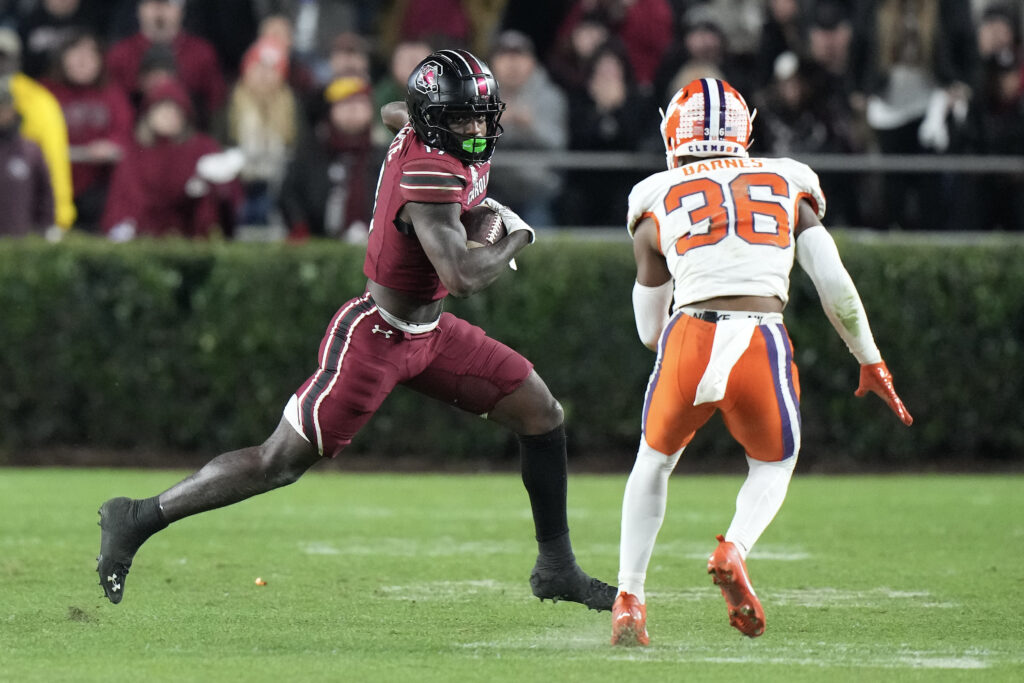
Lifting Bad Offenses
This group is going to serve double duty as the players who excelled in bad passing offenses and the mid-round receivers who could provide value in the draft.
South Carolina's Xavier Legette and Virginia's Malik Washington were the bottom two in quarterback yards per attempt when throwing to other players in the offense. They also both came out near or at the top of Target Yards Added, which isn't a common combination.
Legette comes out with the best score, and there’s been a decent track record over the past few seasons for the player who came out first. Over the past five seasons, those players have been Jaxon Smith-Njigba, Jaylen Waddle, Christian Watson, Waddle and Tee Higgins. However, the years before that did include Emmanuel Hall (Terry McLaurin was third), Byron Pringle and Shelton Gibson.
The knocks on Legette are his age (24) and that it took him until his fifth season to break out. But it was hard not to watch him carry the South Carolina receiving corps and come away impressed. At 6-foot-1 and 221 pounds, Legette has the size to play big on the outside but also has some explosiveness with a 91st-percentile vertical, 79th-percentile broad jump and 4.39-second 40-yard time to run after the catch.
He can use his size at the catch point and can find holes in the zone, and he has the agility of a kick returner — he had 441 yards and a touchdown on 15 returns in 2022.
Malik Washington is small (5-foot-8, 191 pounds), but he plays hard and angry. At the combine, he said he studied Steve Smith, and that shows in his game. He’s willing to get physical despite a size disadvantage, and he uses that aggression to run through defenders.
Because of Virginia's offense, Washington had to run a ton of screens, but his combination of strength and quickness allowed him to fight through traffic and turn those plays into positive gains. He had at least 100 yards in all but two games in 2023 — in one of those, he had 97. He had the ability to take over games while he was the only credible passing option, and he had the second-highest target share in this draft class.
He might have to be a slot-only player in the NFL but we’ve seen plenty of those players have success in the pros. With the creativity of offenses, that’s not the knock it used to be for prospects.
Red Flags
Generally, it’s alarming for a prospect to have negative Target Yards Added. That means the receiver in question is adding less to the offense per target than when the ball gets thrown anywhere else. That makes this class so interesting — while there are so many receivers who have beefed up the average of this class, we have an unusual number of receivers projected to be high draft picks who fall into this category.
Including this year’s class, 69 receivers in our sample have come out negative. Just two previous receivers — Jerry Jeudy and Chris Olave — were drafted in the first round. Both were somewhat victims of their teammates. Jeudy played with Henry Ruggs, Waddle and DeVonta Smith, while Olave played with Garrett Wilson and Smith-Njigba.
Jeudy has disappointed to this point in his career, even if the Cleveland Browns are betting on him playing up to his potential. And Olave seems to be an outlier in what this metric tracks with Smith-Njigba having such a high volume and outsized production in the 2021 Ohio State offense.
Adonai Mitchell somewhat falls into this category, too, though he is largely viewed as the best of the three Texas receivers in this draft class. But none of the Longhorns stand out. Teammate Xavier Worthy, also a possible first-round pick, comes out with a Target Yards Added of exactly zero, while Jordan Whittington is under 1.0 at 0.52.
The Texas offense had its struggles in 2023, and that wasn't limited to just one receiver. The receivers also played a role.
Mitchell played mostly on the outside but didn't possess the ability to consistently beat man coverage and was often boxed out on contested catch attempts. He also didn’t show the type of speed or agility to break away from defenders to run after the catch.
Worthy set the combine record for the 40-yard dash but doesn’t have a lot of nuance in his route running to multiply that speed. We’ve seen several fast receivers who couldn't translate their speed into production due to a lack of effective route running. His speed could be tantalizing for teams that want to put him as the No. 3 receiver on a trips side, which can significantly affect the defensive coverage, but those might be the types of plays an offense has to manufacture for him early in his career.
Then, there's Keon Coleman of Florida State. Coleman comes out poorly across the board with -0.71 Target Yards Added and 1.74 yards per route run. At 6-foot-3, Coleman is a fluid mover, but that doesn't always carry over into his routes.
He’s not the best route runner, and that has caused a lack of separation, which can get him in trouble down the field and make him over-reliant on physicality at the catch point. He doesn’t have the long speed to get past defensive backs, which also forces more contested targets. Coleman is physical enough to run through tackles, so he could project more as a low-aDOT power slot who could use his strengths closer to the line of scrimmage and in the middle of the field.
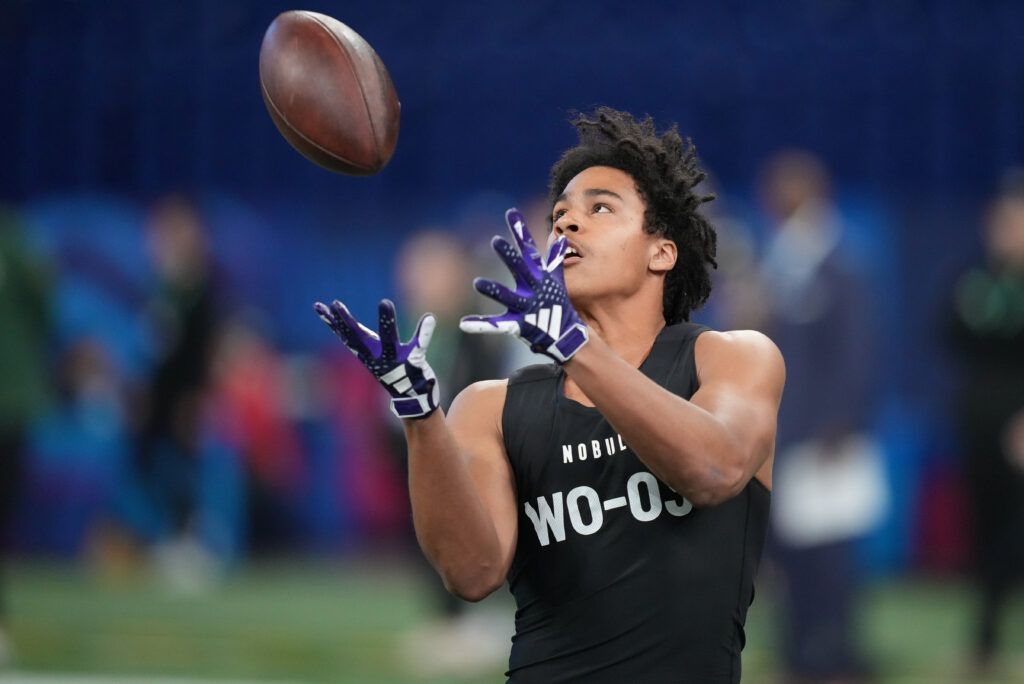
Someone To Watch
A name that stands out is Jalen Coker from Holy Cross. It’s tough to compare an FCS receiver to some of these players who were playing against the best competition in college football, but Coker dominated whoever he played. Not only does he come out favorably in Target Yards Added, but he also has high yards per route run, target share and targets per route run.
Coker’s 4.57-second 40-yard dash is disappointing by receiver standards, but his route running can make up for that lack of speed. He’s also explosive off the line with a 98th percentile vertical and an 86th percentile broad jump. Among his closest Mockdraftable comps are Rashee Rice, Brandon Aiyuk and Nate Burleson.
Christian Watson was more highly regarded when he came out of North Dakota State as an incredible athletic tester in 2022, but the two receivers were similar in volume and efficiency in their final FCS seasons.

Coker could be worth a Day 3 flier for a team betting on his route-savvy playing up at the highest level.


